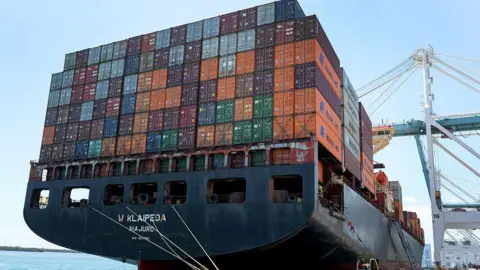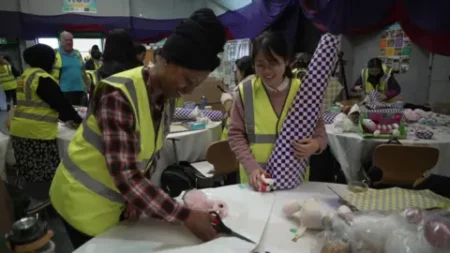The World Trade Organisation (WTO) has recently projected a significant downturn in global trade, predicting a shrinkage of approximately 0.2% for the year. This forecast has raised concerns among economists and business leaders alike, as it suggests that international commerce is struggling to maintain momentum amidst increasing protectionist policies. Central to this decline are the tariffs introduced by U.S. President Donald Trump, which are expected to exacerbate tensions in the global trading landscape.
The WTO, headquartered in Geneva, serves as a crucial global institution that regulates international trade. Its assessment carries substantial weight, influencing policy decisions and economic forecasts worldwide. The predicted contraction in trade reflects broader economic anxieties that have been building due to ongoing trade disputes, particularly between major economies such as the United States and China. The imposition of tariffs has introduced uncertainty, leading businesses to rethink their strategies and potentially reduce trade volumes.
Analysts believe that the trade dynamics have shifted dramatically due to these protectionist measures. Trump’s tariffs, initially aimed at bolstering American industries by making imports more expensive, may paradoxically hinder trade by creating retaliatory measures from other nations. These punitive duties often lead to a cycle of escalated tariffs that can diminish the overall volume of trade as countries become more hesitant to engage in exchanges that could be threatened by sudden, unilateral tariff hikes.
The WTO’s forecast underscores the interconnected nature of global economies where policies enacted in one country can have far-reaching effects across the globe. The implications are profound, impacting everything from market stability to consumer prices. As companies grapple with these changes, many are likely to pivot towards more localized supply chains to mitigate risks associated with international commerce. This potential shift towards domestic sourcing may offer short-term protection but could ultimately lead to increased production costs and higher prices for consumers.
Furthermore, the WTO’s report brings to light the vulnerabilities within the global trading system, which has been lauded for its ability to foster economic interdependence and growth. The ongoing trade tensions threaten to unravel decades of progress in international cooperation and market liberalization, pushing nations towards isolationist policies. If this trend continues, the repercussions could lead to a fragmented trading environment, undermining the potential for collaborative economic growth in developing and developed regions alike.
The sectors most affected by these tariffs encompass a wide range of industries, from technology and agriculture to consumer goods. Companies heavily reliant on imports for sourcing materials or exporting their products are at significant risk. The potential for price increases and supply chain disruptions may lead to diminished competitiveness in international markets. Additionally, investors are likely to remain cautious, reviewing the stability and viability of companies impacted by the shifting trade policies.
In conclusion, the WTO’s projection of a 0.2% decline in global trade represents a critical juncture in the international economic landscape. As the world grapples with the consequences of trade tariffs introduced by the U.S. administration, the ripple effects are set to challenge long-standing assumptions about globalization and its benefits. The future of trade hinges on policy adjustments and international cooperation, as the global community seeks to navigate through these tumultuous economic waters. The ongoing developments will require careful observation as countries weigh their own economic interests against the need for a stable and expansive global trading system.











